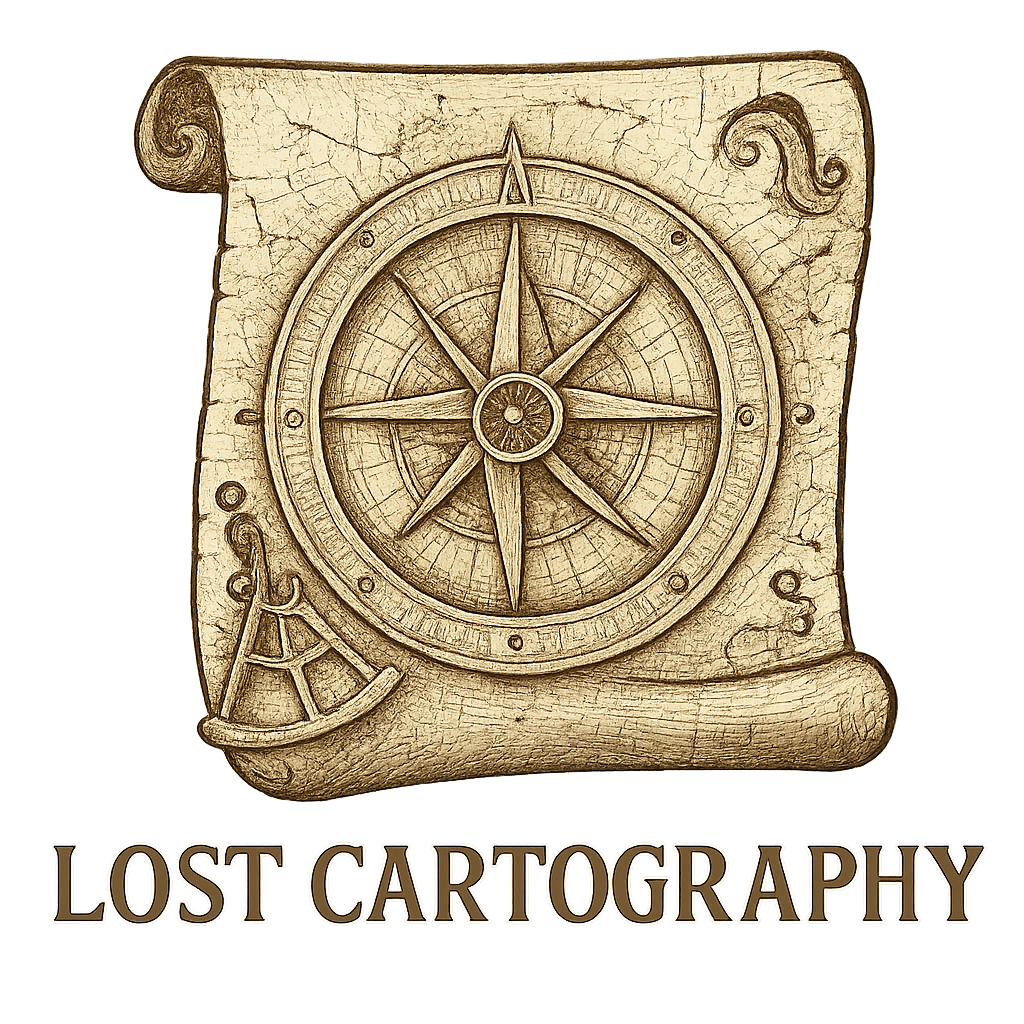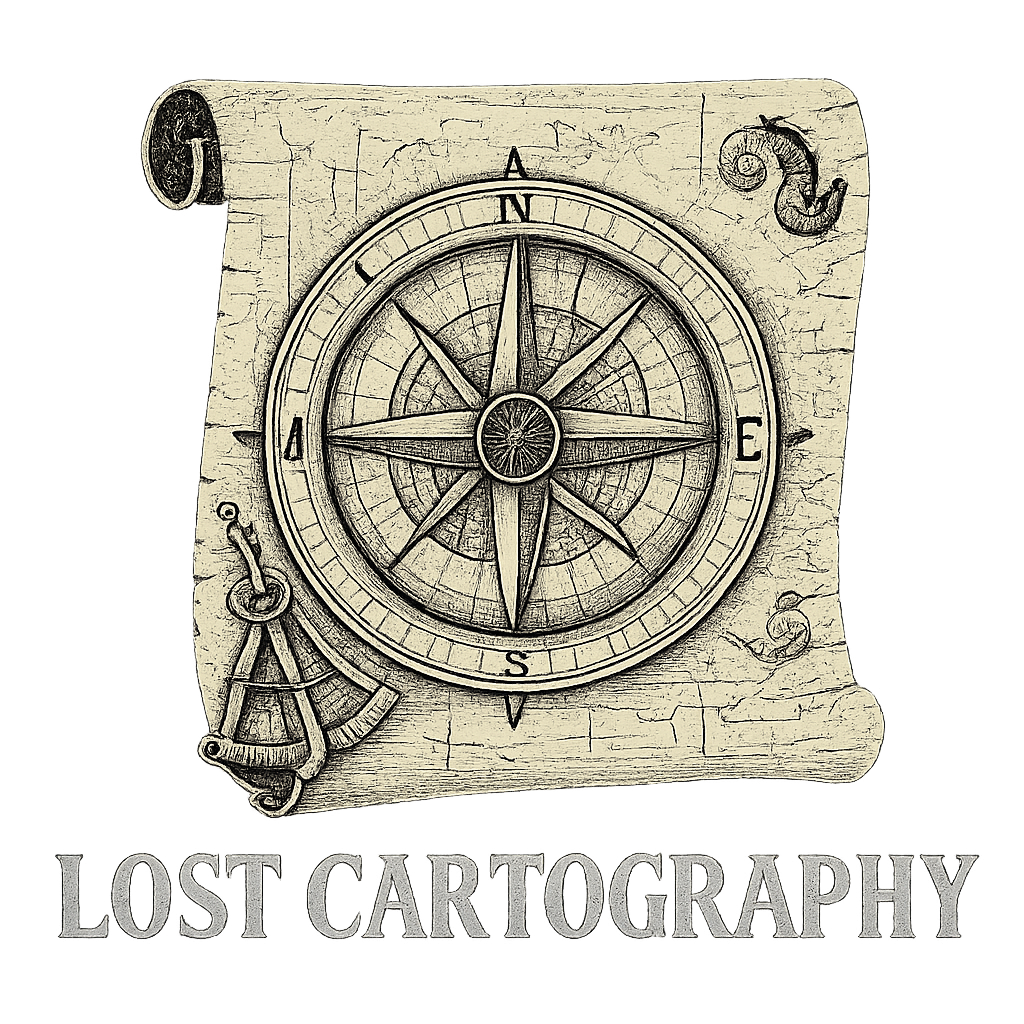Now Reading: Phantom Islands: Maps of Places That Never Existed
-
01
Phantom Islands: Maps of Places That Never Existed

Phantom Islands: Maps of Places That Never Existed
Hidden within the yellowed pages of ancient maps lies a fascinating cartographic mystery: phantom islands. These non-existent landmasses haunted maritime charts for centuries, leading countless sailors on futile quests across vast oceans.
Picture the Isle of Demons near Newfoundland, where 16th-century European maps warned of supernatural creatures lurking in treacherous waters. Or consider Sandy Island in the Coral Sea, which remained on modern maps until 2012 – only to be discovered as nothing more than open water.
These cartographic ghosts emerged from a perfect storm of factors:
- Primitive navigation techniques, reminiscent of ancient mapping techniques
- Misidentified natural phenomena
- Sailors’ tales and local legends
- Deliberate fabrications
The stories behind phantom islands reveal the human element in map-making – how perception, belief, and imagination shaped our understanding of the world. While modern technology like GPS and satellite imaging has exorcised many of these geographical specters, they remain powerful reminders of cartography’s evolution from art to science.
These mysteries are not just limited to phantom islands; they extend to some of the most puzzling maps ever created as well. Interestingly, despite their inaccuracies, some maps featuring these phantom islands have become the most valuable maps ever sold.
For a deeper dive into the history of phantom islands and their impact on cartography, you can learn more about it from the Royal Museums Greenwich.
Understanding Phantom Islands
Phantom islands are a fascinating type of map anomaly – landmasses that existed only on maps but never in reality. Unlike lost lands such as Atlantis or the sunken continents of ancient geological periods, phantom islands were believed to exist during the time they appeared on maps.
These nonexistent islands appeared on historical maps in various ways:
- Detailed Features: Mapmakers often included intricate coastlines, mountain ranges, and river systems. This highlights the importance of knowing how to read and understand ancient maps, a skill that can be developed with resources like this guide.
- Population Centers: Some maps showed towns, ports, and cultural landmarks.
- Natural Resources: Descriptions of plants, animals, and mineral deposits were included in accompanying texts.
- Navigation Routes: Maritime charts incorporated these islands into established sailing paths
Historical records reveal interesting patterns in how these fake islands on maps were documented. Some appeared as simple dots or rough sketches, while others featured elaborate illustrations complete with mythical creatures and detailed geographical descriptions. The British Admiralty charts, considered highly authoritative, included several phantom islands until the early 20th century.
The persistence of these mapping errors often came from mapmakers copying from existing maps instead of checking locations themselves. This resulted in a continuation of mistakes across generations of maps, with some phantom islands appearing in navigational documents for centuries. Such practices highlight the development of cartography, showing how maps have influenced our understanding of geography over time.
Additionally, these phantom islands also remind us of the hidden messages that can be encoded within maps. Exploring these hidden messages can provide deeper insights into the historical context and intentions behind mapmaking. For those interested in collecting these historical artifacts, understanding their significance is crucial. Hence, utilizing resources like this ultimate guide to collecting and preserving antique maps could be incredibly beneficial for enthusiasts and collectors alike.
Famous Phantom Islands and Their Stories
The history of mapmaking includes several fascinating phantom islands that captured imaginations and influenced maritime exploration for centuries.
Isle of Demons
Located off the coast of Newfoundland, the Isle of Demons appeared on 16th-century European maps. Sailors reported hearing demonic screams and witnessing dark figures along its shores. The island’s legend grew from the tale of Marguerite de La Rocque, who survived being marooned there in 1542, battling supposed demons and harsh elements for two years.
Frisland
Frisland dominated North Atlantic maps between 1560 and 1660. Venetian explorers Nicolò and Antonio Zeno allegedly discovered this substantial landmass south of Iceland. The Zeno map, published in 1558, detailed Frisland’s cities, rivers, and mountains with such precision that it influenced navigation for a century. Martin Frobisher’s 1576 expedition sought Frisland, mistaking Greenland’s southern tip for this mythical island.

Bermeja
The mysterious Bermeja first appeared on a 1539 map in the Gulf of Mexico. Spanish charts listed precise coordinates and described it as a resource-rich outcrop. The island’s significance grew when it became crucial for determining maritime boundaries between Mexico and the United States. Despite multiple search expeditions using modern technology, no trace of Bermeja has been found at its recorded position.

Sandy Island
Sandy Island persisted on maps between Australia and New Caledonia until 2012. First charted by the whaling ship Velocity in 1876, it continued appearing in Google Maps and marine charts. The Australian research vessel Southern Surveyor discovered only open ocean at the supposed location. Scientists determined that the phantom island likely
The Causes Behind Cartographic Errors
The creation of phantom islands stems from three primary factors that plagued early maritime exploration: primitive navigation tools, natural phenomena misinterpretation, and the powerful influence of folklore.
1. Navigation Limitations
Early sailors relied on celestial navigation and dead reckoning to determine their position at sea. These methods, while revolutionary for their time, had significant margins of error. A study by the Journal of Navigation revealed that position errors of up to 100 nautical miles were common during the Age of Exploration. The case of Pepys Island illustrates this challenge – what William Cowley claimed as a new discovery in 1683 was actually the Falkland Islands, misplaced due to faulty calculations.
2. Natural Phenomena Misidentification
During their voyages, sailors often encountered various natural phenomena that they misinterpreted as landmasses or islands. Some examples include:
- Cloud banks appearing as distant landmasses
- Floating ice sheets resembling stable ground
- Temporary sandbars mistaken for permanent islands
- Volcanic activity creating temporary land formations
The Thompson Island case exemplifies these errors. Multiple 19th-century ships reported its existence near South Georgia, but the “island” was likely a massive iceberg or persistent fog bank. The British Antarctic Survey confirmed its non-existence in 1997.
3. Mythological Influences
Sailors’ tales gained extraordinary traction in medieval and renaissance cartography. The Royal Geographical Society archives document how local legends shaped mapping decisions:
- Sea monsters marking dangerous waters
- Mythical lands from folklore appearing on official charts
- Religious beliefs influencing geographical interpretations
The Antillia archipelago remained on maps for centuries based solely on Portuguese folklore about seven bishops who fled with their followers to establish cities on distant islands. These stories gained legitimacy when respected cartographers included them in their works, creating a cycle of self-reinforcing errors.
While these historical cartographic errors are fascinating, modern technology such as satellite imagery from missions like Terra has significantly improved our understanding and mapping of the Earth’s surface, reducing the occurrence of such errors.
The Evolution of Cartography: From Phantom Islands to Accurate Mapping
The transformation from historical cartography to modern mapping techniques represents one of humanity’s greatest technological leaps. Early cartographers relied on:
- Celestial navigation
- Dead reckoning
- Hand-drawn sketches
- Verbal accounts from sailors
These methods, while revolutionary for their time, left significant room for error. The advent of aerial photography in the early 20th century marked the first major shift toward precise mapping.
How Modern Technologies Have Changed Cartography
Modern cartographic technologies have changed how we understand Earth’s geography:
- GPS Systems provide real-time positioning accurate to within meters
- LiDAR Technology creates detailed 3D terrain models
- Satellite Imaging offers comprehensive views of Earth’s surface
- Digital Mapping Software enables instant updates and corrections
Satellite imaging has been especially effective in proving that phantom islands don’t exist. In 2012, the Australian Hydrographic Service used satellite data to confirm that Sandy Island was not real, even though it had been shown on Google Maps and marine charts for over a hundred years.
The Role of Sentinel Satellites in Modern Cartography
The European Space Agency’s Sentinel satellites now provide detailed Earth observation data, capturing changes in landmasses and ocean surfaces with unprecedented accuracy. This technology enables cartographers to maintain living maps that reflect real-time changes in our planet’s geography, eliminating the possibility of phantom islands persisting in modern charts.
Impacts Beyond Maps: Cultural Significance and Lessons Learned from Phantom Islands
Phantom islands shaped maritime culture in profound ways, becoming integral parts of sailors’ folklore and storytelling traditions. These mythical landmasses inspired countless tales of adventure, danger, and supernatural encounters at sea. The Isle of Demons, for instance, generated rich narratives about demonic creatures and lost souls, reflecting the deep-seated fears and superstitions of medieval seafarers.
These cartographic mysteries influenced literature and art throughout history. Writers like Edgar Allan Poe drew inspiration from phantom islands for their works, while maritime paintings often depicted these enigmatic locations as both beautiful and treacherous paradises.
The study of phantom islands offers valuable insights for modern navigation and cartography:
- The importance of verifying geographical data through multiple sources
- The need to distinguish between factual observations and cultural beliefs
- The role of human perception in shaping our understanding of the world
Maritime exploration myths continue to fascinate researchers and historians, providing windows into past societies’ worldviews. The Royal Geographical Society notes how these cartographic errors reveal the complex relationship between human imagination and scientific discovery.
These phantom islands serve as reminders of humanity’s eternal quest to understand and map the unknown. Their stories demonstrate how scientific progress often involves correcting long-held misconceptions while preserving the cultural heritage they represent.
Conclusion
The story of phantom islands shows our ongoing desire to explore and our complicated connection with the unknown. These mysterious places on maps, like the eerie Isle of Demons and the hard-to-find Sandy Island, remind us that even our strongest beliefs about the world can be questioned by scientific progress.
The Impact of Modern Cartography
Modern map-making has changed how we see Earth’s geography, replacing imaginary lands with accurate satellite images and GPS locations. But the fascination with phantom islands remains, sparking our curiosity and teaching us important lessons about how human knowledge has evolved.
These invisible spots on old maps reveal something deep about us: our urge to discover, our ability to make mistakes and correct them, and our incredible journey from guessing to scientific proof. As we move forward in creating maps, we not only bring better tools and methods but also a greater understanding of the complex process involved in representing our world—where every correction brings us closer to knowing what our planet truly looks like.

























